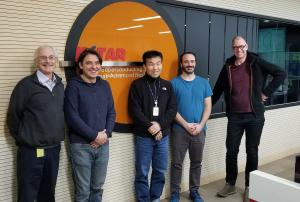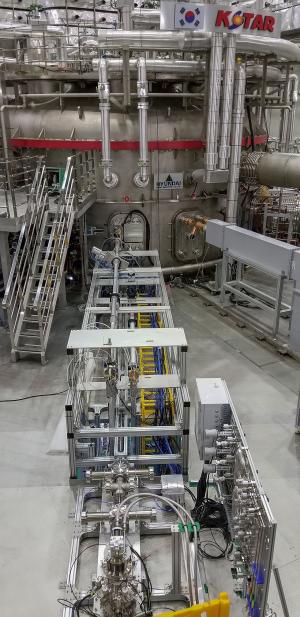ITER-like disruption mitigation at KSTAR
Two weeks ago at the Korean tokamak KSTAR, the technology chosen for disruption mitigation at ITER—shattered pellet injection—was tested for the first time in an ITER-like dual-injection configuration.
The design work of the ITER disruption mitigation system is driven by a team of engineers that was formed in 2019 at the ITER Organization, after the responsibility for the system was taken over from the US Domestic Agency. This team continues what has been developed at the Oak Ridge National Laboratory (ORNL) as a voluntary US contribution, progressing the design with high intensity in order to have it ready to integrate into port plug designs by 2022. In parallel, the task force is investing in optimizing key technologies as well as validating the functionality of the design. The first large-scale experimental project of the task force is the KSTAR shattered pellet injector project.
ITER's disruption mitigation strategy is based on the injection of cryogenic pellets from different toroidal locations into plasmas that are unstable and will disrupt. This method aims to decrease electromagnetic and thermal loads to machine components.
Just before they enter the plasma chamber, these pellets—which have a diameter of 28.5 mm and a length of more than 50 mm—are shattered into small fragments. This concept ensures that the frozen deuterium and neon is ablated and assimilated by the plasma to achieve the high densities that are required for disruption mitigation. The plasma thermal and magnetic energy will be dissipated through radiation rather than leading to large heat loads and electromagnetic forces.



